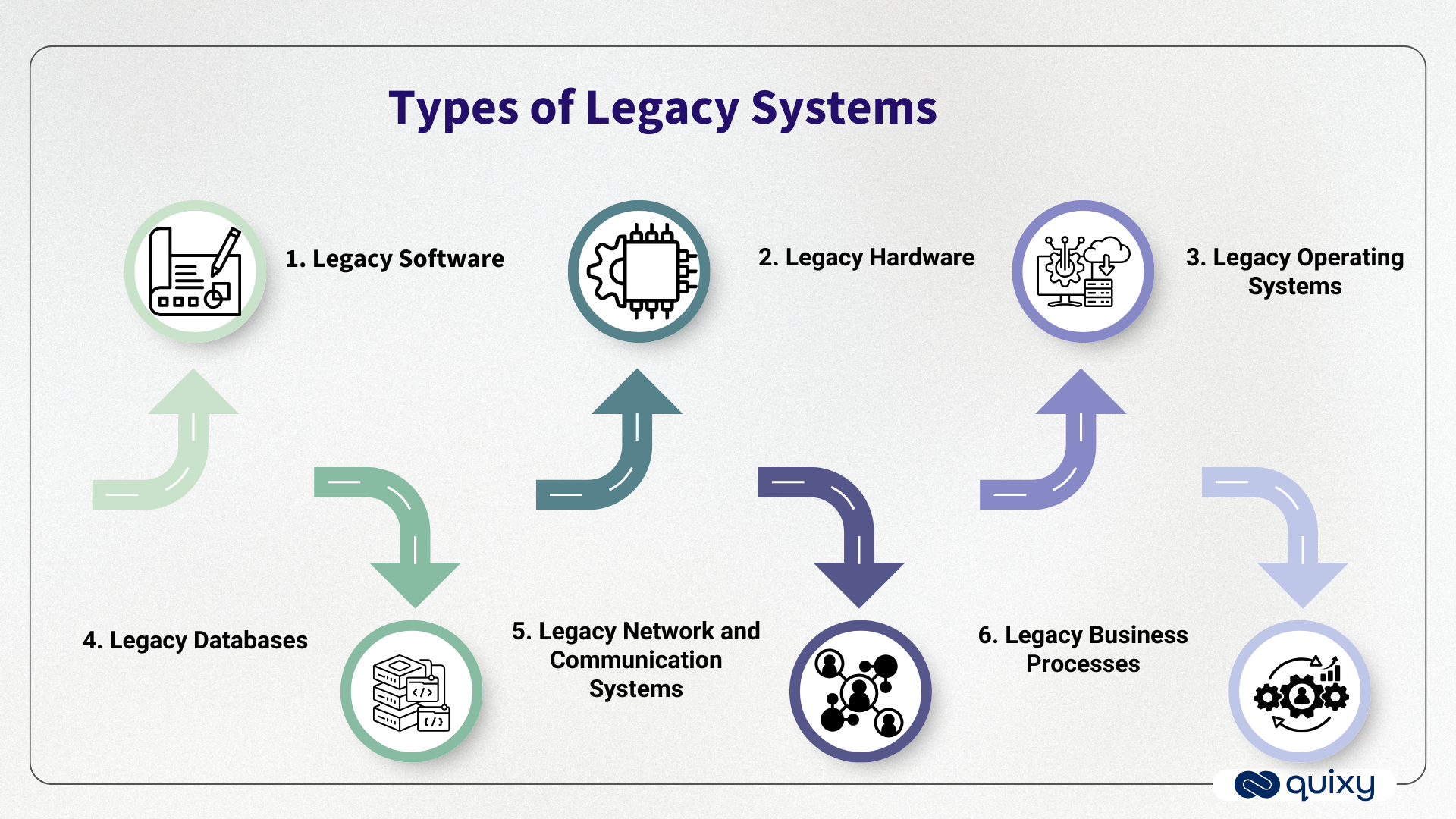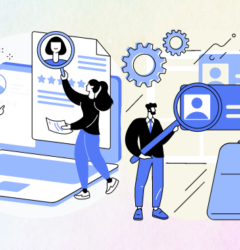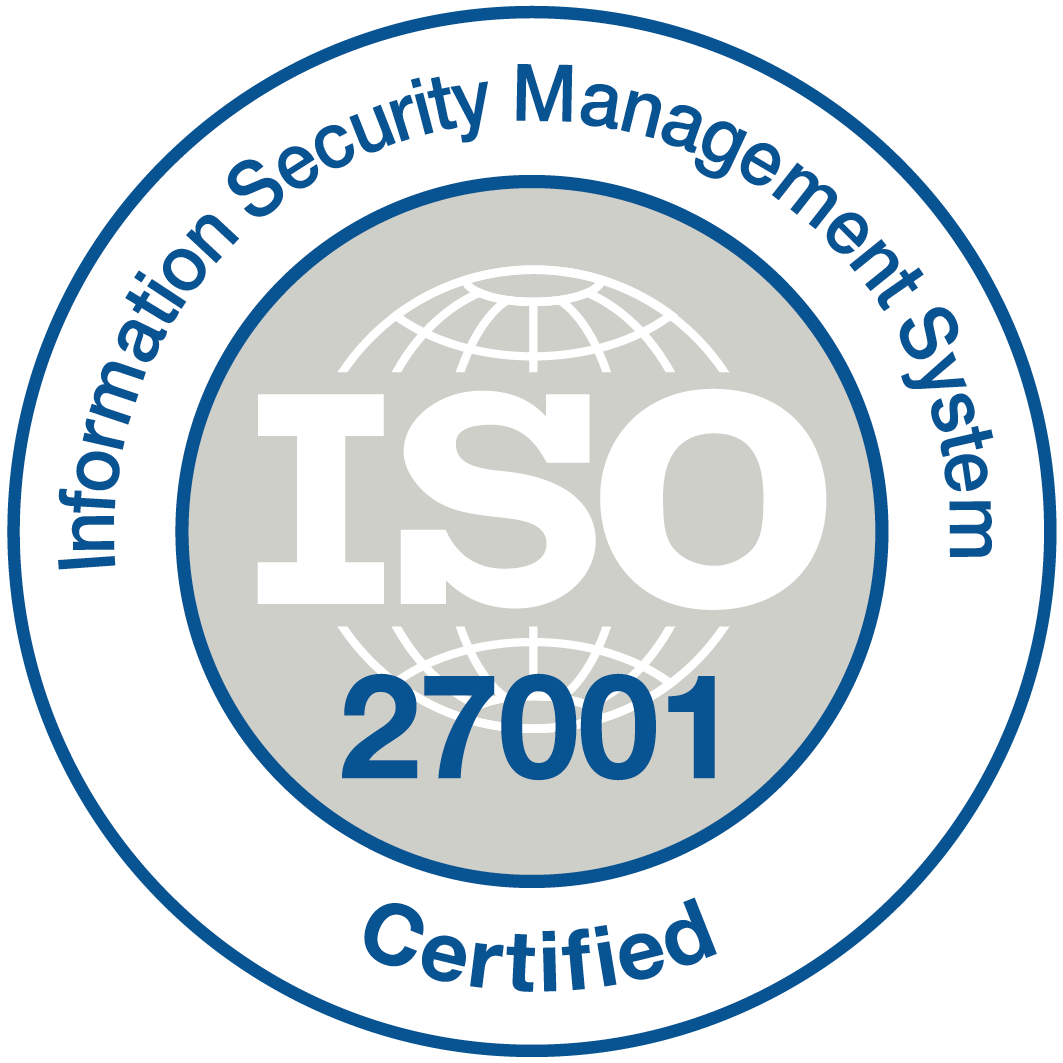
With a fast-paced, agile, and ever-changing market, only businesses that are capable of adapting to such environments can thrive and achieve greatness. This adaptability can only come through the right kind of Digital Transformation strategies. Digital transformation not only automates the workflow and lets things happen faster but also provides a better customer experience, allowing the scope of data-driven decision-making to serve the organization better. The only way to fully understand and enjoy the advantages of digital transformation is through Business and IT teams that are aligned properly while working in a synced collaboration.
But guess what? There are still a lot of businesses that are clinging to the old and outdated legacy systems like ERPs, CRMs, Hardware, and even the old operating systems. Using such legacy systems as the primary method to managing the flow of information is a pretty massive obstacle towards digital transformation and the agility and pace that come with it.
Legacy systems are rigid as they do not interact much with the current systems and can be difficult to navigate. But they are still being used which is maybe because of a rigid perspective and a misplaced satisfaction with the existing system or irrational fear of change.
So if you think that the legacy systems aren’t actually that bad, we are here to tell you the 6 very specific drawbacks that these legacy systems have (and, of course, the solution to fix it all so that your business can take advantage of a complete Digital transformation!)
What is Legacy Systems?
A legacy system is an outdated computer system, application, software, or technology that is still in use within an organization. While it may have been effective when first implemented, a legacy system often struggles to meet current business needs due to limitations in performance, compatibility with modern technologies, and support availability.
Legacy systems can include old ERP or CRM software, mainframe computers, outdated operating systems, or custom-built in-house applications that are critical to operations but difficult to maintain or integrate with newer tools.
legacy system meaning:
In short, a legacy system continues to support essential business functions but can become a barrier to digital transformation, agility, and innovation if not modernized.
Legacy Software Meaning:
Legacy software refers to an outdated application or program that is still in use within an organization, often because it performs critical functions that newer software has yet to replace. While it may have been effective at the time of implementation, legacy software can present challenges such as limited compatibility with modern systems, high maintenance costs, security vulnerabilities, and difficulty in scaling or integrating with new technologies.
Why are legacy systems still used?
If legacy systems create so many challenges, why do organizations continue to rely on them? The truth is, businesses often have valid reasons for holding onto legacy technologies, even when modernization seems like the obvious choice.
1. High Initial Investment
Legacy systems—like ERP, CRM, or core banking software—often required massive financial investments when first implemented. Many organizations hesitate to abandon them because they want to maximize returns on that initial cost.
2. Business Dependency
Over the years, entire workflows, processes, and even compliance requirements may have been built around legacy systems. Replacing them can feel risky, especially if the system is still “doing the job” at a basic level.
3. Migration Risks
Data migration is complex and comes with risks of downtime, data loss, or system failure. Businesses often prefer to “stick with what works” instead of venturing into a potentially disruptive transition.
4. Employee Familiarity
Teams that have been using the same system for years are comfortable with it. Even if the system is outdated, employees may resist change due to the learning curve that comes with new technologies.
5. Vendor Lock-In
Many legacy systems tie organizations to specific vendors for support, updates, or customizations. Businesses often feel “stuck,” fearing that modernization will lead to additional vendor costs or loss of control.
6. Short-Term Cost Concerns
While modernization reduces long-term expenses, the upfront cost of replacing or rebuilding a system can feel daunting. For many organizations, especially smaller ones, this becomes a major barrier.
7. Perception of Stability
Legacy systems are often seen as “stable” because they have been running for years. Leaders may equate longevity with reliability, ignoring the hidden risks of security gaps, maintenance costs, and inefficiencies.
What are the Disadvantages of Legacy System?

1. Inaccessible data (no real-time data analysis!!)
Legacy systems force companies to have multiple disconnected systems to actually meet the needs of various departments. Such systems create a patchwork of different systems with almost zero data flow. A specific department does not have access to the data of other departments, which often is something crucial for getting things done. For example, if your company has different software for CRM and Invoicing, which are not integrated, then both systems will have different sets of customer data.
These two sets of data need to be in sync with each other for effective management of customer data. However, issues arise when the data doesn’t match because of something minor, like a difference in how the customer has been named in the system, and it leads to duplication of the data for the same customer.
The constant copying and sharing of data from one system to another just so that all the departments have the necessary access to them may also lead to a lot of data loss.
To maintain the gaps in this patchy web of systems, teams work incessantly, spending a lot of their time and effort. As there is a delay in configuration and updation, it ultimately leads to delayed data analysis or, worse, no data analysis at all. Such conditions make it impossible for business leaders to get real-time data analysis that is needed to guide decision-making.
Watch Webinar: Steer clear of common Data Pitfalls with Quixy Data Sync
2. Legacy system complexities
As legacy systems produce a highly fragmented network of systems, the whole thing raises complexities. The working of the system becomes more and more complex as the patching work that goes into simulating an integrated system is often undocumented. Thus when a new issue arises in the system, it becomes a tedious task to actually find it in the already complex system.
Legacy systems also make it pretty difficult for new technologies like AI, ML, IoT, or even SaaS to be incorporated into the system as Legacy systems are old and cannot interact with new technologies, thus being a major obstacle for IT-Modernization. Such complexities make the overall organization slow and outdated, while the competitors might have an upper hand because of using the latest technological tools.
3. Maintenance and expenses
Legacy System software often operates in legacy system hardware as they often aren’t compatible with the new technologies. These very old designs of hardware take a lot of budgets to be maintained and thus can cost a fortune to the business. For example, very old and outdated operating systems can function well in old desktop systems. But when these ancient desktops need maintenance, some parts may not even be available in the market anymore which forces the business leaders to make special provisions to arrange those essentials by investing more time, effort, and even money.
The legacy system software is also coded in outdated languages like COBOL, and the framework maintenance requires someone with extensive knowledge of the specific language. Now the problem that arises here is that coders who know such outdated languages are very rarely found and may or may not be available all the time to fix small and big issues.
Legacy systems eat up a massive part of the IT budget for maintenance and fixing, which is why the IT team cannot provide the right tools and support that are essential for the organization to grow.

4. Less flexibility and agility
Legacy systems are pretty rigid in many ways. Not only they are incapable of interacting much with other systems, but they are also incompatible with a majority of new technologies. Even fixing minor problems in the systems is a big task as it requires the person to actually have a technical background and some experience of working with the particular system. It becomes impossible for an average business user to work their way through the legacy system and make the necessary changes for their work. This not only causes the IT team to have an extra workload but also creates a huge gap between the IT and the business teams.
The lack of incorporation of the latest technologies also cost the companies their agility, making them a pretty slow business with a stark inability to adapt in the fast-paced, changing market.
5. Cyber security issues
Legacy Systems may seem very reliable to the people who have been working with them for a long time. However, with the passing of time and the advancement of technology, there is another that has advanced significantly; Cybercrimes. According to Global News Wire, Cybercrime costs for companies will grow by 15 percent percent over the next 5 years, reaching $10.5 trillion USD annually by 2025, up from $3 trillion USD in 2015.
Because of being coded in outdated languages fixing the security loopholes in Legacy systems is a tough job due to the unavailability of coders. Thus the system is completely exposed and practically asked to be breached.
Along with the cyber security attacks, legacy systems also largely depend on hardware to keep data rather than having cloud-based storage. Security issues are a concern when these hardware malfunctions and important data is lost forever.
6. Innovative slowdown
World Economic Forum/ WE forum explains that innovation only comes when an ‘ecosystem’ of internal and external stakeholders is built by letting the data flow in both directions. In simpler language, customers’ experiences and issues are very crucial input for companies to come up with new and innovative product or service ideas. This cycle of problems, innovations, and solutions helps businesses grow, while the uniqueness of the innovations makes the company stand out in the market from the competitors.
However, legacy systems aren’t as flexible as they need to be to make such ecosystems and rather build a more ‘closed’ system where there is not much scope for an Omni-directional flow of data. Such systems make it pretty difficult to get insights into customer behavior, thus slowing down the process of innovation.
Legacy systems aren’t just annoying because of their rigidity but they can actually cost a lot of time and money to your business, be it through security breaches, hardware failures, maintenance, and fixing costs. So, how do we really deal with these ancient systems that have been exiting for so long and actually pave the way for digital transformation?
Also Read: Evolve, Don’t Replace with Quixy – Overcoming Legacy System Gaps
The easiest way is to turn to no-code and low-code platforms! Even if you are still not ready to take the leap towards a complete transformation and believe that digital modernization will be more appropriate for your business, it is best to eradicate the obsolete applications of the legacy systems as they do not really serve anymore and enhance the systems that are still dependable with new systems build by no code/low code tools.
Eradicating or at least depending less on outdated legacy systems will not only pave the way for better performance and higher security but will also help your business become more agile. Th digital transformation will bring opportunities for growth as the decision-makers will have the advantage of making real-time data-based business decisions.
7. Integration Hurdles
Integrating legacy systems with modern applications or third-party services becomes increasingly challenging. The lack of standard APIs and compatibility issues between old and new technologies result in complex integration processes, hindering seamless workflows and data synchronization.
Integrating legacy systems often requires custom programming and workarounds. This can be a time-consuming and expensive endeavor, requiring specialized expertise and ongoing maintenance. It can also introduce vulnerabilities and reduce flexibility, as any changes to the legacy system might necessitate revising the custom integrations.
8. Vendor Dependency and Support
As legacy systems age, vendor support may diminish or be discontinued entirely. This leaves businesses reliant on outdated software or hardware without access to essential updates, patches, or technical assistance, making systems more vulnerable to failures and security breaches.
As years pass, vendors may gradually wind down or completely terminate support for older software or hardware versions. This leaves businesses stranded on an island of outdated technology, deprived of critical updates, security patches, and technical assistance.
Also, Migration to modern solutions becomes even more challenging when locked in by vendor dependency. The lack of compatibility with newer technologies and the complexities of data extraction from outdated systems further entangle organizations in the legacy web.
9. Data Silos and Duplication
Legacy systems often contribute to data silos, where information is compartmentalized and fragmented across different platforms. This fragmentation leads to duplicate data entry, inconsistencies, and a lack of centralized data management, impacting data accuracy and decision-making.
- Siloed data creates barriers to seamless collaboration across departments. Employees struggle to access and share crucial information, hindering efficient workflows and impacting overall productivity.
- Fragmented data makes complying with data governance regulations and privacy laws difficult. Lack of centralized control increases the risk of data breaches and exposes sensitive information.
These issues highlight the critical need for breaking down data silos and establishing centralized data management practices. Doing so can unlock the true potential of your data, empowering informed decision-making, optimizing workflows, and driving organizational success.
10. Cloud Adoption
Legacy systems may not seamlessly integrate with cloud-based services or adopt cloud technology. This inability to transition to the cloud limits scalability, flexibility, and access to modern cloud-based features, impeding the organization’s ability to leverage cloud benefits.
Organizations relying on legacy systems miss out on the latest cloud-based features and functionalities. From advanced analytics to AI-powered tools, the cloud offers a treasure trove of possibilities that remain inaccessible, leaving businesses struggling to compete with cloud-enabled rivals.
While migrating to the cloud might require an initial investment, clinging to legacy systems can incur hidden costs in the long run. Inefficiencies, maintenance burdens, and missed opportunities often outweigh the perceived cost savings of outdated technology.
Also read: Digital Modernization a Must. Modernize your Enterprise IT today!
Examples of Legacy Systems
Legacy systems are not just outdated software—they span across industries and technologies that were once cutting-edge but are now difficult to maintain or integrate with modern solutions. Some common examples include:
1. COBOL-Based Banking Systems
Many banks and financial institutions still run their core systems on COBOL, a programming language from the 1960s. These systems handle billions of daily transactions but are expensive to maintain due to the shortage of COBOL developers.
2. Mainframe Computers
Large enterprises, government agencies, and insurance companies still rely on mainframes for transaction processing and record-keeping. While stable, they lack agility and make integration with cloud technologies difficult.
3. Windows XP and Older Operating Systems
Despite being unsupported, some businesses still use older versions of Windows for specific applications. These outdated operating systems pose major cybersecurity risks.
4. On-Premise ERP and CRM Systems
Legacy ERP solutions like early versions of SAP or Oracle, and CRM tools that are not cloud-enabled, still exist in many organizations. They are rigid, costly to update, and unable to support remote or mobile work efficiently.
5. Telecommunication Switching Systems
Older telecom infrastructure still runs on legacy switching hardware, making it difficult to adopt modern digital communication technologies.
6. Custom-Built In-House Software
Many organizations have internally developed applications from decades ago that continue to run critical operations. Over time, documentation gets lost, and support becomes nearly impossible.
7. Healthcare Systems (EHR/EMR)
Hospitals often rely on outdated electronic health record (EHR) systems that lack interoperability with modern healthcare platforms, slowing down data exchange and patient care improvements.
Types of Legacy Systems

Legacy systems come in many forms, depending on their purpose, technology, and the era in which they were implemented. Understanding the different types can help organizations identify which systems need modernization first.
1. Legacy Software
These are outdated applications still in use because they perform critical business functions. Examples include:
- COBOL-based banking software
- Early versions of ERP or CRM platforms
- In-house custom-built apps that lack modern integration
2. Legacy Hardware
Older physical systems that run essential software but are costly to maintain and prone to failure. Examples include:
- Mainframe computers
- Outdated servers and storage devices
- Old desktop computers running unsupported operating systems
3. Legacy Operating Systems
Outdated OS versions that are no longer supported with security updates or patches. Examples include:
- Windows XP or Windows Server 2003
- Older UNIX versions
4. Legacy Databases
Databases that are no longer efficient, scalable, or compatible with modern analytics tools. Examples:
- Flat-file databases
- Early relational databases that don’t support cloud or real-time access
5. Legacy Network and Communication Systems
Networking infrastructure or telecom systems that cannot support modern connectivity or protocols. Examples include:
- Legacy PBX telephone systems
- Old switching or routing hardware
6. Legacy Business Processes
Even processes themselves can become “legacy” if they are heavily dependent on outdated technology or manual operations. Examples include:
- Manual payroll and accounting workflows
- Paper-based document approvals
Also read: 10 Legacy Modernization Examples: Lessons from Successful Transformations
How Businesses Can Overcome Legacy Challenges
While legacy systems pose serious obstacles, overcoming them doesn’t always mean ripping everything apart at once. Organizations can take a phased, strategic approach to modernization. Here are some effective ways:
1. Adopt a Phased Modernization Strategy
Instead of a risky “big bang” replacement, companies can modernize in stages. This allows teams to retire outdated components gradually, reduce downtime, and minimize resistance from employees.
2. Leverage No-Code/Low-Code Platforms
No-code and low-code platforms help businesses build new applications and automate workflows without depending on traditional coding. They make it possible to:
- Integrate old and new systems through connectors and APIs.
- Develop modern apps quickly with drag-and-drop simplicity.
- Reduce IT backlogs while empowering business teams to innovate.
3. Prioritize Data Migration and Governance
A strong modernization strategy involves cleaning, consolidating, and migrating data into centralized systems or the cloud. Clear governance ensures accuracy, compliance, and security during this transition.
4. Invest in Cloud Enablement
Migrating critical workloads to the cloud ensures scalability, security, and cost efficiency. Hybrid approaches (part legacy, part cloud) can help businesses modernize at their own pace without disrupting core operations.
5. Build Cross-Functional Teams
Modernization isn’t just IT’s responsibility. Involving business leaders, IT experts, and end-users ensures solutions meet real needs while reducing resistance to change.
6. Focus on Security First
Legacy systems are security weak points. By introducing modern authentication, encryption, and monitoring tools—even before full replacement—businesses can safeguard sensitive data while modernizing.
7. Plan for Continuous Innovation
Modernization is not a one-time project but an ongoing cycle. Organizations should regularly assess technology gaps and adopt flexible platforms that can evolve with future needs.
How No-Code Is Revolutionizing the Game
The rise of no-code platforms is changing how organizations deal with legacy systems. Instead of pouring millions into risky rip-and-replace migrations, businesses are finding smarter, faster, and safer ways to modernize with no-code.
Here’s how it’s reshaping the landscape:
1. Bridging Legacy and Modern Tech
No-code platforms can integrate with legacy systems through APIs and connectors, creating a modern interface on top of outdated infrastructure. This means businesses don’t need to discard their legacy investments but can still offer employees and customers an updated, user-friendly experience.
2. Accelerating Modernization
Traditional redevelopment of legacy applications can take years. With no-code, organizations can rebuild critical workflows in weeks, making digital transformation achievable without lengthy delays.
3. Empowering Business Teams
Previously, only IT teams could make changes to legacy applications, causing bottlenecks. No-code democratizes development, allowing business users to design apps, automate workflows, and create dashboards—without touching complex code.
4. Reducing Costs
Maintaining legacy systems is notoriously expensive due to scarce skills and high support costs. No-code reduces dependency on specialized developers and slashes operational costs by automating repetitive tasks and extending the life of older systems.
5. Improving Agility and Innovation
Legacy systems hold companies back with rigidity. No-code unlocks agility by enabling quick experimentation and iteration—helping companies respond faster to market changes and customer demands.
6. Future-Proofing Operations
Instead of being locked into outdated software, organizations can gradually transition parts of their workflows into modern, scalable no-code platforms, ensuring business continuity while preparing for long-term digital transformation.
Legacy Systems Modernization and Migration
Modernizing legacy systems isn’t just about replacing old technology—it’s about creating a foundation for agility, innovation, and long-term growth. Migration plays a crucial role in this process, ensuring that businesses transition smoothly without losing valuable data or disrupting operations.
Key Approaches to Legacy Modernization and Migration
- Rehosting (Lift and Shift)
Move applications from outdated infrastructure to modern environments (like cloud) with minimal changes. This reduces costs quickly while preserving business continuity. - Replatforming
Make small but impactful adjustments to improve performance, scalability, and compatibility—such as moving from on-premise servers to a cloud-native platform. - Refactoring
Re-architect applications to better integrate with modern technologies like AI, APIs, or microservices. This method enhances flexibility and scalability but requires more investment. - Rebuilding
In cases where legacy systems severely limit operations, rebuilding applications from scratch—using modern development tools or no-code platforms—ensures long-term sustainability and innovation. - Retiring
Identify and eliminate redundant legacy applications that no longer provide value, reducing IT clutter and costs.
Why Migration Matters
- Data Accessibility: Migration ensures centralized, real-time data for decision-making.
- Security: Moving away from outdated systems mitigates risks from cyberattacks and compliance gaps.
- Agility: Modern platforms allow faster response to market changes and customer needs.
- Cost Efficiency: Reduced maintenance and hardware expenses free up IT budgets for innovation.
The Role of No-Code in Modernization
No-code platforms accelerate modernization by allowing businesses to migrate processes, rebuild outdated applications, and integrate legacy systems seamlessly with cloud-native solutions. Tools like Quixy empower organizations to adopt a phased migration approach—minimizing disruption while unlocking the speed, flexibility, and scalability that traditional development struggles to deliver.
Get Started with Your Legacy System Modernization
Adopting a modern approach to legacy system challenges doesn’t have to feel overwhelming. The key is to start small, identify the most critical pain points, and gradually build a roadmap toward modernization. Whether it’s automating repetitive workflows, enabling cloud adoption, or integrating outdated systems with newer technologies, businesses can take incremental steps that drive real results without disrupting day-to-day operations.
No-code platforms make this transition even smoother. They provide the agility to build applications quickly, connect with existing systems, and scale as business needs evolve—all without being heavily dependent on traditional coding. Platforms like Quixy enable organizations to break free from rigid legacy environments and move toward flexible, future-ready solutions that align with digital transformation goals.
Taking the first step today ensures your business isn’t just keeping up but is actually prepared to lead in a rapidly changing digital landscape.
How Quixy Can Help in Archiving Legacy Systems
Archiving legacy product systems is critical, but traditional approaches can be time-consuming, expensive, and prone to errors. Quixy’s no-code platform simplifies this process, enabling organizations to preserve valuable historical data efficiently and securely. Here’s how Quixy supports legacy system archiving:
1. Centralized Data Management
Quixy allows businesses to consolidate data from multiple legacy systems into a single, centralized repository. This ensures historical information is organized, accessible, and ready for compliance audits or reporting needs.
2. Automated Workflows for Archiving
Manual data extraction from old systems is labor-intensive and error-prone. Quixy automates these workflows, making it easy to transfer, validate, and store legacy data with minimal human intervention.
3. Secure and Compliant Storage
Data archived through Quixy can be encrypted and stored with role-based access controls, ensuring sensitive information remains protected while meeting regulatory requirements.
4. Seamless Integration
Quixy’s platform integrates with a wide range of legacy software and databases, allowing businesses to extract historical records without disrupting ongoing operations.
5. Future-Ready Access
Once archived in Quixy, legacy data can be accessed, analyzed, or even used to build modern applications, dashboards, or reports—turning previously “dormant” information into actionable insights.
By leveraging Quixy for archiving, organizations can safely retire old systems, reduce maintenance costs, and still retain critical historical data—all while laying the groundwork for a complete digital transformation.
Takeaway
No-code platforms are easier to use and are a very simple but effective tool for the integration of legacy systems making them somewhat compatible with the recent and latest technologies. No-code systems are also effective enough to actually help businesses go through complete digital transformations and replace the old outdated systems.
Quixy is one of the leading No-code platforms available that has done award-winning work in the last couple of years helping a lot of businesses upgrade from their age-old legacy systems and become more agile through digital transformation. Quixy has successfully busted the myth that no-code is only for developing simple applications and has actually made it possible to create more complex enterprise-level applications with simple drag-and-drop features without writing even a single line of code.
So if you are looking for a complete transformation of your business that will only make it all better, Quixy is here to the rescue!
Ready to transform your business? Get started now and experience the power of automation and app creation, all without the need for coding skills.
Frequently Asked Questions(FAQs)
Q. Can I customize modern solutions to fit my specific needs and processes?
Yes, modern solutions can be tailored to suit your specific needs and processes. Platforms like Quixy provide no-code and low-code tools, allowing businesses to create custom applications that align perfectly with their unique requirements. Quixy’s flexibility enables the creation of applications without extensive coding knowledge, adapting to specific workflows and processes.
Q. What are the best practices for data governance during modernization?
Data governance during modernization involves establishing clear policies, procedures, and controls to ensure data quality, security, and compliance. Quixy’s platform supports robust data governance practices by enabling centralized data management, defining access controls, and ensuring data integrity across applications.
Q. What are the tangible benefits of modernizing my legacy systems?
Modernizing legacy systems brings numerous advantages, including enhanced efficiency, improved agility, reduced maintenance costs, and increased competitiveness. Quixy aids in this transformation by facilitating the development of scalable, agile, and efficient applications that streamline processes and boost productivity.
Q. Isn’t migrating to the cloud a huge challenge?
While migrating to the cloud may present challenges, cloud providers like Quixy offer migration tools, support, and phased approaches to ease the process. The long-term benefits of scalability, flexibility, and cost savings outweigh the initial hurdles. Quixy’s cloud-based platform ensures seamless integration and accessibility, enhancing scalability and flexibility.
Q. How much will modernization cost?
The modernization costs vary based on factors like the chosen approach, system complexity, and vendor support. Quixy’s no-code platform offers a cost-effective solution by minimizing development time and reducing dependency on specialized coding skills, providing long-term gains in efficiency and competitiveness.
Q. What are the Signs Legacy Systems an Obstacle for Digital Transformation?
Legacy systems hinder digital transformation due to their rigidity and outdated infrastructure, impeding seamless data accessibility and real-time analysis. These systems pose challenges in integrating with modern technologies, incur high maintenance costs, and elevate cybersecurity risks due to outdated coding. Their limited agility and innovation capabilities inhibit businesses from adapting swiftly to market changes. Migrating data from legacy systems is complex, impacting data quality, while costs and dependency on specialized support further stall modernization efforts, presenting significant obstacles to digital transformation.
















